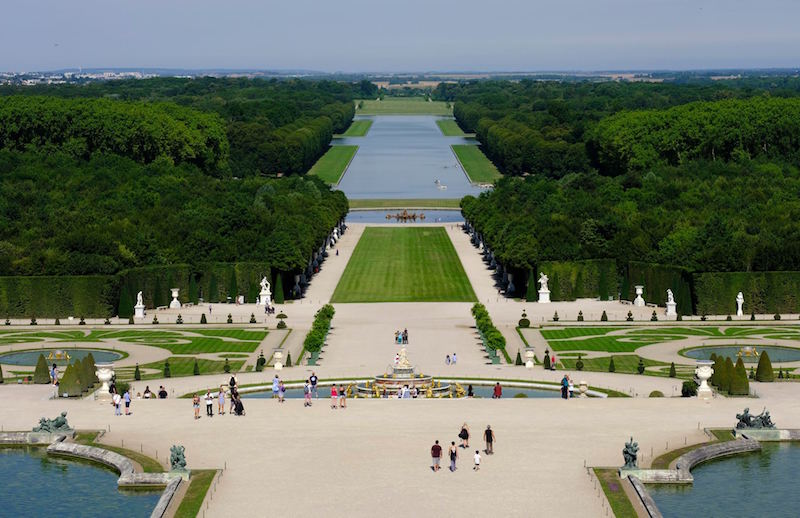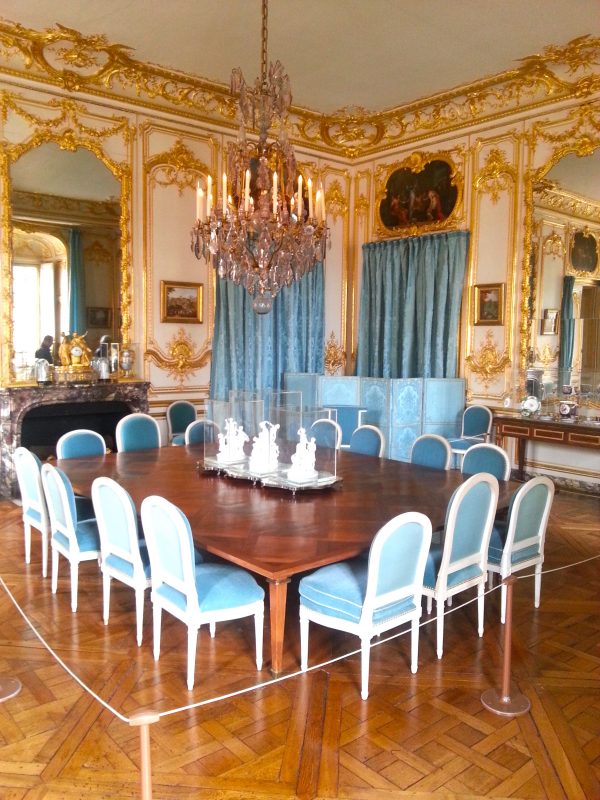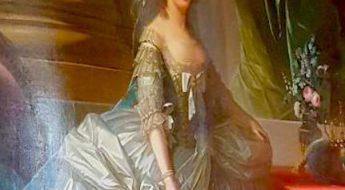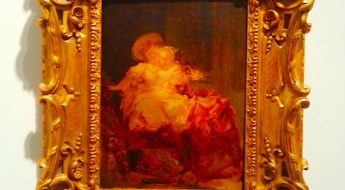Our friends at the official Château de Versailles website have published this stunning rooftop view from the centre block (I assume) down the central axis of the gardens to the Tapis Vert and the Grand Canal beyond.

View from the roof of the Château de Versailles towards the Grand Canal. Credit: http://www.chateaudeversailles.com
Looking at this view makes me feel quite kingly. Why? Because Louis XV is known to have enjoyed spending time on the roof of the Château.
As explained in a previous post, Louis XV’s first alteration to his great-grandfather’s house was a suite of rooms under the eaves, above the original Petits Appartements. This suite, known as the Petits Cabinets, was begun in the late 1720s. Sadly, it no longer exists. It was surmounted by a roof garden, which the King enjoyed so much that he had a dining room built level with the garden, called the Salle-à-Manger d’Été. This little dining room was abandoned when the larger dining room in the remodelled Petits Appartements was completed in the 1740s.

The dining room in the Petits Appartements as it appears today. The decor dates from Louis XVI’s reign. Photographed in late March, 2016.
Nonetheless, the Bien Aimé liked to take his guests up onto the roof for an after-dinner stroll when the weather was fine. Ian Dunlop, quoting from the memoirs of the 3rd Duc de Luynes, describes the scene in his magisterial book about the Château, entitled simply Versailles:
“On summer evenings the King and his guests would sometimes go up on the roof and walk round behind the balustrade. ‘For some time,’ relates Luynes, ‘he has been going up on to the roof of the Château and walking with those who have the honour of dining with him right to the end of the new wing, and from there right to the end of the Aile des Princes.’ It is the most fascinating walk in the whole of Versailles. the view of the gardens and park was not the least attraction of these midnight expeditions; one can imagine the warm smell of lilac and lime trees and the still darkness of the plantations, cut here and there by the pale luminosity of water or the dim outline of a parterre. Over the courtyards they could look down into the illuminated windows of the sleeping palace, and sometimes Louis would make surprise visits to his courtiers. ‘He has been several times to converse with Madame de Chalais,’ continues Luynes, ‘by a window which opens on to the roof, and with Madame de Tallard by the chimney’ (pp 122-123).”
Imagine finding the King knocking at your window in the middle of the night with a gaggle of your no doubt tipsy fellow courtiers behind him!


















Leave a Comment